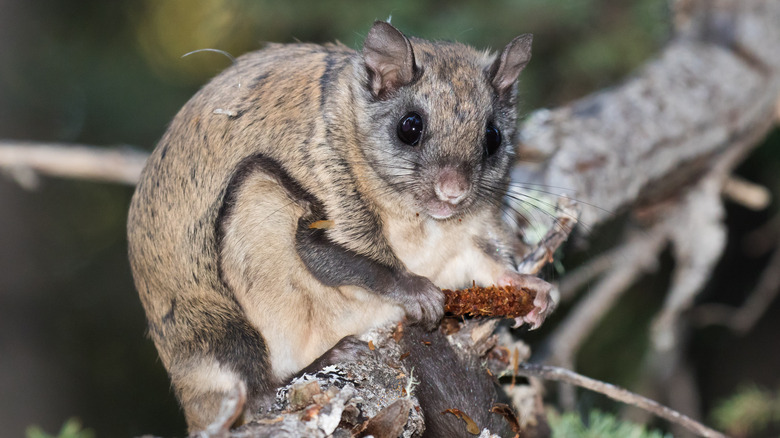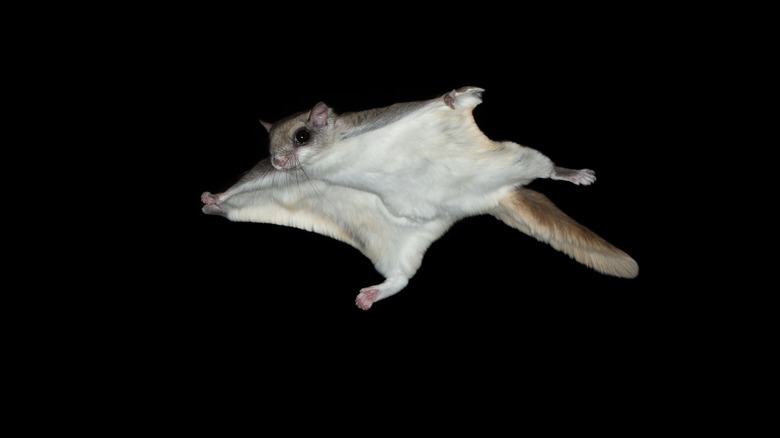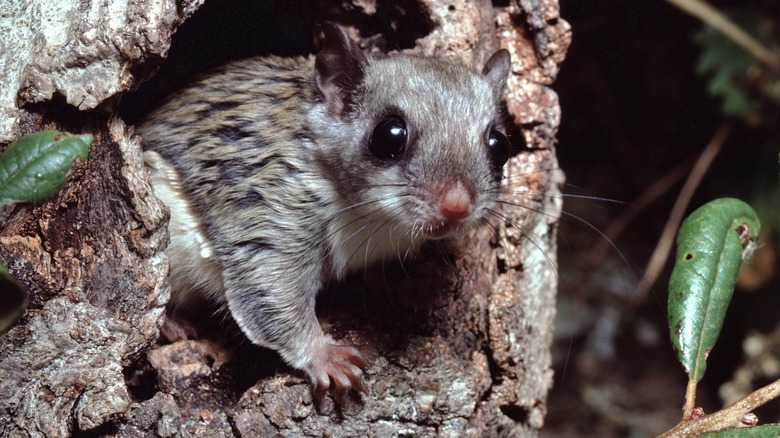Theories As To Why Flying Squirrels Glow Pink Under UV Light
As if flying squirrels weren't strange enough — they are, after all, squirrels that fly (okay, more like glide) — certain flying squirrel species have at least one other superpower, according to a 2019 study published in the Journal of Mammalogy. The researchers found that the belly of these little creatures — New World flying squirrels, native to North America — glow pink when exposed to ultraviolet (UV) light, an extremely rare trait among mammals, according to Scientific American. And although no one's sure exactly why it happens, scientists have some theories.
The reasons why New World flying squirrels glow in UV light might relate to factors behind many other animal evolutions. As they're nocturnal, it might help them see each other in the dark, or even help them attract a mate. Owls that share ecosystems with New World flying squirrels also shine under UV light, so researchers think those pink-bellies might help ward off predators, or at least confuse them. But according to Allison Kohler of Texas A&M University, who contributed to the squirrel study, there's one other possibility: "It could just be a cool color they happen to produce," she said (via The New York Times).
Whether flying squirrels see UV light is unknown
As The New York Times goes on to point out, other creatures of sea, land, and air have long been known to glow under UV light. Marsupial Virginia opossums, who also live in North America, can do it, and so, too, can all sorts of insects, birds, and fish. And while the ability to glow pink certainly suggests New World flying squirrels can also see UV light, no one knows for sure. What is known is that many bird species see ultraviolet light, even nocturnal owls, although perhaps not as well as their diurnal cousins, Vision Research.
Interestingly, owls in New World flying squirrel territory also light up under UV light — as do the lichen on trees they flit back and forth in between. Flying squirrels may have developed this trait either as a defense mechanism or, as Newsweek reports, a form of camouflage. UV light is also strongest when flying squirrels are most active at dawn and dusk, and certain types of UV light shine brightest in snow-covered landscapes, where some flying squirrels live.
Regular squirrels don't glow
To reach their conclusions about the New World flying squirrel's ability to glow pink in UV light, researchers reportedly studied the coats of deceased flying squirrel carcasses in museum collections, as well as living flying squirrels living in nature. As senior study author Paula Spaeth Anich of Northland College told National Geographic, "The fluorescence was there in the Glaucomys" — the scientific name for North American flying squirrel genus — "from the 19th to 21st century, from Guatemala to Canada, in males and females, and in specimens collected in all seasons."
As to why it might happen, biologist Corinne Diggins at Virginia Tech University, who was not involved in the research, seemed to put her money on the mate selection theory. "Maybe a brightly pink fluorescent belly on a male flying squirrel makes a female swoon," she said (via National Geographic). As for Anich, she wondered if this discovery might mean there are whole other vistas of color in the natural world humans can't see. "From our diurnal primate standpoint," she said, we may be "overlooking many aspects of animal communication and perception" happening all around us in low light and the dark.


